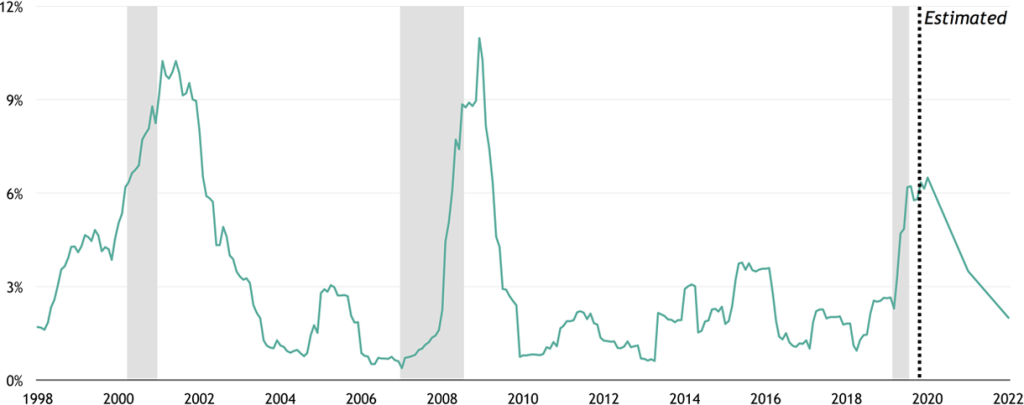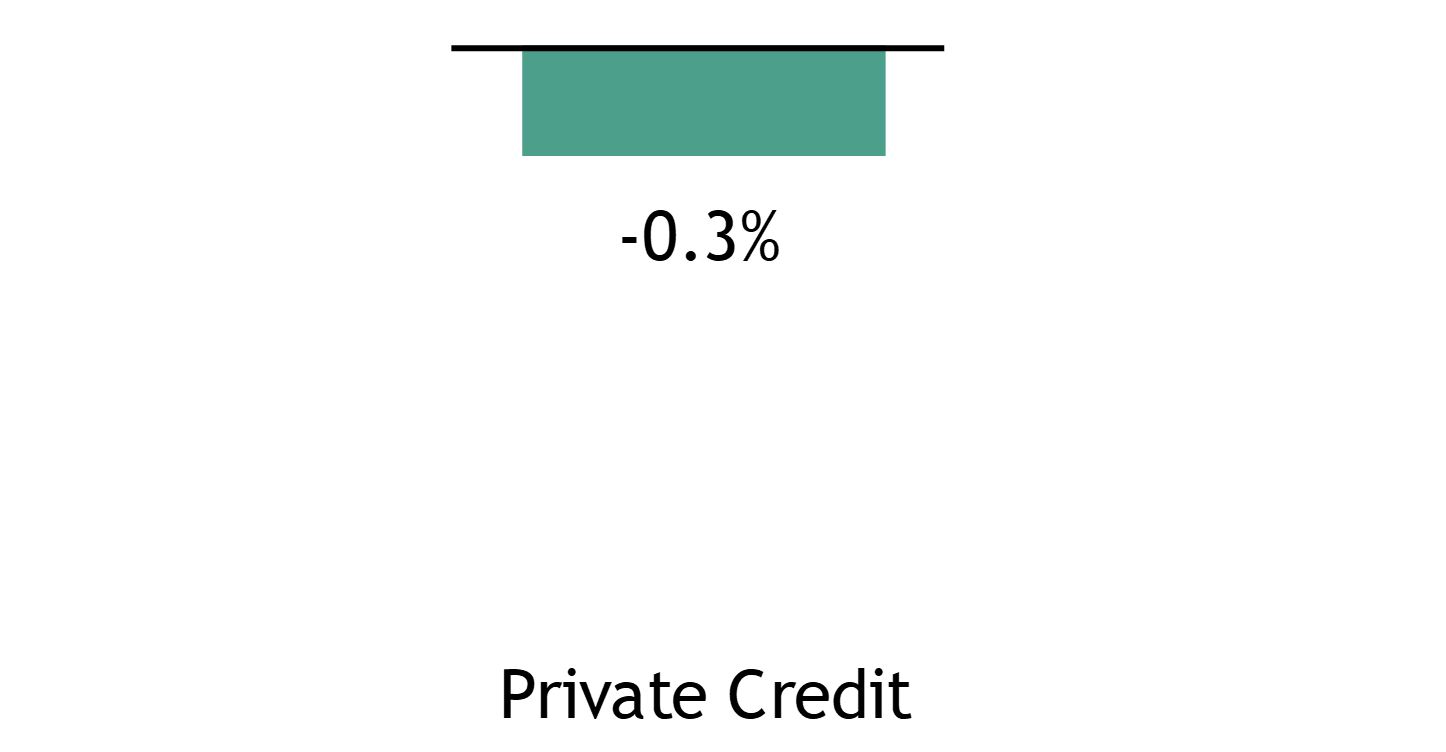by Joe Zidle, Blackstone
For yield, I believe traditional corporate bonds aren't the best answer for investors right now. From where I sit, alternative forms of credit are a more attractive opportunity.
Here’s a thought: Maybe there isn’t any credit risk left in the corporate bond market. High prices and lack of reward suggest that’s the case. Famed investor and philanthropist Lee Cooperman quipped in a recent CNBC interview that bonds currently represent “return-free risk.”1 The sentiment seems apt. Thanks to government safety nets and highly accommodative monetary policy, spreads in the corporate bond space are back to pre-COVID levels. Compression in high yield bonds recently led to a record low yield of 4.3%.2 For yield, I believe the traditional route isn’t the best answer for investors right now. In my view, they should start to think differently.
Corporations in excellent shape The Federal Reserve’s aggressive policy response to COVID likely prevented a wave of bankruptcies and defaults. And historically low interest rates provided a backdrop for record bond issuance. Companies raised over $2.1 trillion in precautionary cash while reducing interest expense and extending maturities to protect against near-term financing needs. Cash as a percentage of assets on the balance sheet of non-financial companies is at the highest level in at least 50 years.3 As corporate profits have troughed, I expect a bumper earnings crop in 2021.
Such good times don’t last, though Booms and busts in the corporate sector are more frequent than in the economy as a whole. The average length of a profits cycle is measured in quarters, while an economic cycle is measured in years. Figure 1 highlights the default cycle among high yield issuers; you can see that default rates peak during recessions, but they rise in non-recessionary periods, too. And while this cycle is estimated to have a lower peak of default rates, the downside risk of a spike in COVID-related defaults remains.
Figure 1: Historical US High Yield Default Rates

Source: JPM Default Monitor, as of 11/30/20. Represents LTM default rates.
The investor’s dilemma The yield investors receive from traditional corporate bonds deserves attention. As Figure 2 shows, US corporate bond real yields went negative for the first time this year. At negative real rates, investors aren’t paid for interest rate, duration or, most importantly, credit risk, as seemingly benign as it might look today. As a result, they face a difficult choice: accept lower yields from investment grade bonds or go down in quality for more yield.
Figure 2: US Investment Grade Bond Real Yields (bps)

Source: Bloomberg, as of 12/10/20. Represents the Bloomberg Barclays US Corporate Bond Index yield to worst less the US 10-year breakeven inflation rate.
More risk, but even less return Going down in quality should involve a pickup in yield, but even here the compensation is becoming less attractive as the yield pickup of BBB-rated bonds over A-rated bonds is back to pre-COVID levels. The low absolute yields also contributed to a spike in high-yield issuance; the current tally of $406 billion in 2020 YTD is about 57% higher than FY2019.4 As a result, the high yield gross leverage (debt-to-EBITDA) ratio has spiked to 5.8x, in the 85th percentile historically.4
A different path to better returns While investors have fled to riskier and riskier public credits in the hunt for yield, private credit returns remain relatively attractive. Returns in private credit have the potential to be higher for a variety of reasons, including the difficulty in negotiation and structuring the deals, a scarcity of capital as traditional banks have pulled back lending, and the relative difficulty that investors face in accessing private securities. Alternative credit like privately-originated senior secured loans also sits at the top of the capital stack, making it relatively secure. Figures 3 and 4 illustrate this point, showing that private credit historically has loss rates lower than that of senior loans and high yield bonds.
Figure 3: Averaged Realized Loss
(2005-2020)

Average realized loss is the historical average of the realized gains/losses for the Cliffwater Direct Lending Index. Source: Cliffwater as of June 30, 2020
Figure 4: Average Loss Rates
(2005 – 2020)

Average loss rate is calculated by taking the default rate * (1 – recovery rate). Source: JPM Default Monitor as of June 30, 2020.
As an asset allocation, I find little reason to own traditional corporate bonds that are priced to perfection in this environment. From where I sit, alternative forms of credit are a more attractive opportunity.
With data and analysis by Taylor Becker.
- CNBC, June 15, 2020.
- Bloomberg, as of 12/7/20. Represents yield to worst for the Bloomberg Barclays US Corporate High Yield Index.
- Federal Reserve, as of 9/30/20. Represents the assets of US nonfinancial corporate business that are classified as checkable deposits and currency, as a share of total assets.
- BofA Global Research, as of 12/4/20.













